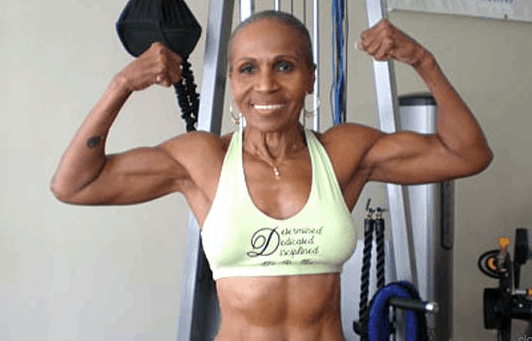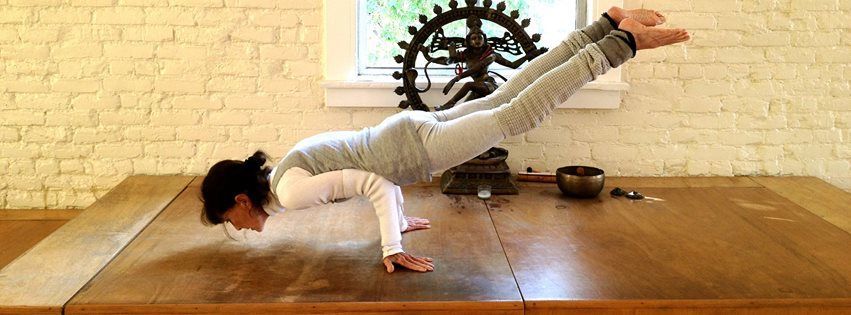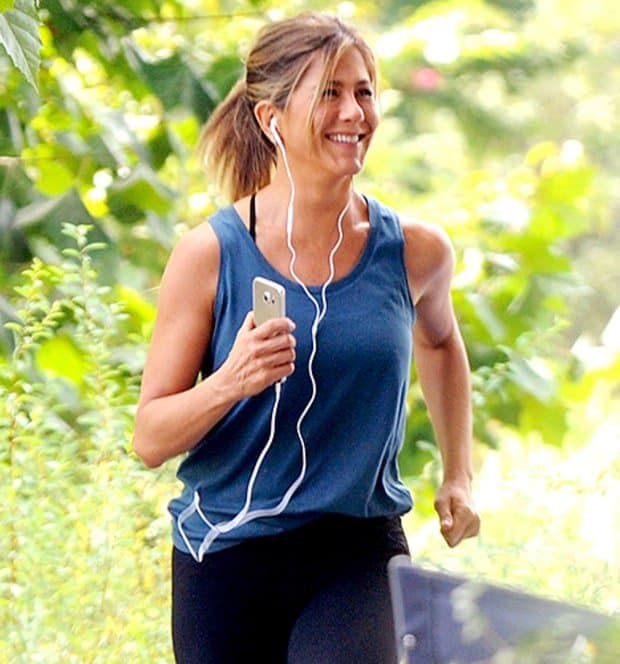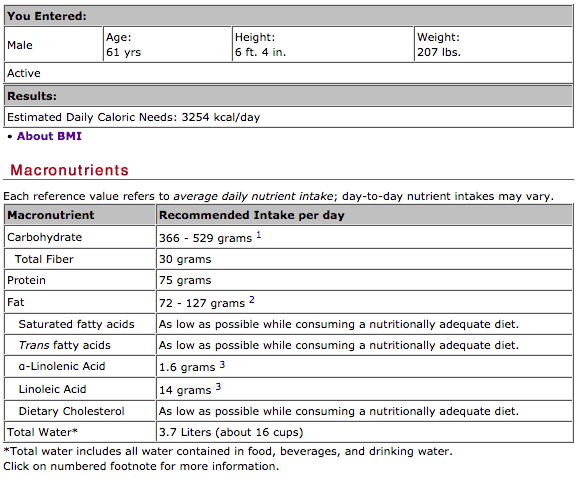How To Get Lean and Muscular, Part 3 — Fuel Your Body
Here’s how to get lean and muscular by properly fueling your body with specific macronutrients and supplements to enhance fat loss and build lean muscle.
AN OLD clunky diesel tractor can run on sludgy, dirty fuel. It slowly chugs along, belching smoke and grinding gears. A race car runs on high-octane fuel. It hugs the road as it nimbly speeds along, and everything is mechanically fluid.
Which would you rather be?
I recognize that this metaphor only goes so far, because a tractor is designed to run on diesel, even if of poor quality, but the race car can only perform well on a specific, high-quality fuel — and so it is with you!
If you fuel yourself like a tractor, at some point your performance will be very compromised, and the benefits of the exercise routines suggested in Part 2 will be tiny.
You can huff and puff all you want, but unless you’re willing to do the exercise workload of an Olympic athlete, you will not become lean and muscular by exercise alone. Yes, you can add muscle without dialing in your diet — as long as you consume enough protein — but it will be covered by fat.
Our intent is not to become chubby-muscular (a state of being I’m personally quite familiar with), but to become lean and muscular, whether you’re a man or woman.
Ladies, click here to see what's possible for you.
It’s obvious from the pictures that these women, from 47 to 90 years young, know how to get lean and muscular. And so can you.
Ernestine Shephard, a 74-year old body builder who never stepped into a gym till she was 56!
Phyllis Sues at age 90
Jane Fonda at age 72
Demi Moore at age 51
Jennifer Aniston at age 47
And so after having learned how to test and assess our fitness and body fat percent in Part 1 and then getting absorbed by all the exercises that can make yourself lean and muscular in Part 2, we now turn to Part 3 to get clear on how to best fuel your body.
The goal is to learn how to get lean and muscular by implementing the information in all three parts of this three-part series.
In this article, you’ll discover:
- Why your diet contributes 75% of the get lean and muscular battle.
- How lean you want to be determines what you need to do.
- What you need to know about macronutrients.
- How to determine your daily recommended macronutrients.
- Proven supplements to help build muscle.
- Why the timing of when you eat can supercharge the fat melt.
Let’s dig in…
Your Diet Contributes 75% To Your Fat Loss Battle
Yes, that’s what Shawn M. Talbott, PhD, nutritional biochemist and former director of the University of Utah Nutrition Clinic says:
“As a rule of thumb, weight loss is generally 75 percent diet and 25 percent exercise. An analysis of more than 700 weight loss studies found that people see the biggest short-term results when they eat smart. On average, people who dieted without exercising for 15 weeks lost 23 pounds; the exercisers lost only six over about 21 weeks. It’s much easier to cut calories than to burn them off. For example, if you eat a fast-food steak quesadilla, which can pack 500-plus calories, you need to run more than four miles to ‘undo’ it!” (1)
As the saying goes:
You can’t outrun your fork, sorta speak, because your body’s metabolism adjusts to exercise. As a matter of fact, it does that with calories too. Consequently, it’s a mighty fine idea to mix things up, and not do the same thing all the time — something I touch on in the section below titled, “why the timing of what you eat can supercharge the felt melt”.
How Lean You Want To Be Determines What You Need To Do
I’ve snatched a great infographic from Precision Nutrition’s post, The Cost of Getting Lean. a website stuffed with insightful information about adopting healthy lifestyle diets that you can sustain.
Spend enough time with the insights presented in the infographic to get some clarity about how to get lean and muscular.
I suggest you first focus on the body fat percentage that is below yours, but closest to it. Work on that. Otherwise, the advice about what you’d have to do to get dramatically leaner may be overwhelming. We don’t like overwhelm. We run from it. What you want is a program you run toward, not away from.
Scroll down to what body fat percentage you’d like to have and then give yourself a reality check by reading what you need to do more, and less of, to get there.
Precision Nutrition points out that many of us operate under two myths:
Myth #1: With just a few small, easy, hopefully imperceptible changes to one’s diet and exercise routine, you too can have shredded abs, big biceps, and tight glutes, just like a magazine cover model.
Myth #2: “Getting into shape” or “losing weight” involves painful, intolerable sacrifice, restriction, and deprivation.
These are myths because neither are true. The first myth vastly simplifies the changes you’d need to make to substantially cut body fat, not to mention that those big biceps et al need the consistent stimulation of resistance training. The second myth is untrue because it vastly exaggerates the effort required to drop body fat and get in shape.
The key to bring any big change in your life is to begin with a small one. Make it sufficiently puny that there’s little resistance to doing it. Remember:
A journey of a 1,000 miles begins with the first step.
What You Need To Know About Macronutrients
Macronutrients are protein, carbohydrates and fats. You need them all in you diet to properly fuel your body, particularly if the aim is to get lean and muscular. But in what proportions?
There’s a ceaseless debate about which combination of macronutrients is best. Some give the nod to high fat/low carb and others to low-fat/high carb. Some think that we need an abundance of protein and others not so much.
You can make yourself daft and quite confused if you delve into the literature, which I have. (Yes, both daft and confused.)
My take on the best macronutrient mix is to consume the combination that helps you feel and most energetic and healthy:
- If that’s high carbs/low-fat, make sure that the carbs are from food sources that don’t spike your blood sugar, because too much of that can lead to metabolic syndrome, adult-onset diabetes and more body fat.
- If that’s low carbs/high fat, make sure that the fat sources are primarily from omega-3 fatty acids (see below), and secondarily from omega-6 fatty acids.
- And when it comes to protein, get more of it from vegetable sources if you don’t already, such as lentils. Make sure the meat sources are lean and free of hormones and antibiotics, supplement with high-quality protein powers, and try to consume some protein at every meal.
Protein
Rather than repeat myself, those of you who want to understand more about how to get lean and muscular need to understand that protein is necessary to whittle away body fat and build lean muscle. Read these articles I wrote:
In 8 Sure-fire Ways to Trim Body Fat and Keep It Off Forever: The Best Quality Protein, Part 2, I presented the best quality animal protein sources;
In Pump Up Your Metabolism: Eat Protein, Not Wheat, the focus was on how to pump up your metabolism and trim belly fat.
In Make Your Paleo Diet More Vegan, Like It Used To Be, the discord between Paleo eaters and vegans/vegetarians is shown to be unsubstantial in the context of the historical perspective.
Here’s a list of healthy protein sources:
- Fish Collagen — try Pure Marine Collagen Peptide Powder
- Whey protein — try Naked Whey and consume it after your workouts for fast muscle repair and building
- Sprouted protein — try the delicious Raw Protein
- Pea protein — try Growing Naturals Protein Powder and your microbiota will love you
- Wald Sockeye Salmon — if your grocer doesn’t carry it, get it on Amazon.com.
- Chicken — but scrutinize those chicken labels, and try to only buy poultry that’s “pasture raised” and “antibiotic-free”
- Lentils
- Chickpeas
- Black beans
- Quinoa
Carbohydrates
“Complex carbs” refer to carbohydrates made up of sugar molecules that are strung together in long, complex chains, which give sustained energy without spiking blood sugar when consumed. “Simple carbs” are turned to glucose (blood sugar) in the body and are used as energy IF needed; otherwise they get stored as body fat. Stay away from simple carbs such as wheat, fruit drinks and alcohol.
If you really want to get righteous, select foods with the highest nutritional density, which you can find in The Most Nutritionally Dense Foods; A Doctor and Billionaire Agree.
Here’s a list of complex carbs:
- Veggies
- Beans/legumes
- Acorn squash
- Sweet potato
- Green peas
- Berries
- Barley
- Oatmeal, steel cut
- Quinoa
And now I’m going to say something that the Paleo Diet people will excoriate me for:
“Low-carb isn’t magic for fat loss”
That’s the conclusion of the fine researchers at Examine.com who push back at the prevailing view that the magic formula for fat loss is low carb/high fat diets.
In 5 Key Nutrition Lessons We Learned in 2016, they explore, among other things, why you can lose body fat on either high or low-fat diets.
An example given is a 2015 study that researcher Dr. Kevin Hall did where people were placed in metabolic wards where diet and exercise were to precisely controlled. The effects of a lower-carb diet with those of a low-fat diet were then compared.
Both diets led to an equal amount of fat loss.
In 2016, Dr. Hall performed a follow-up experiment, this time partly funded by a non-profit organization with a low-carb bias. The carb consumption was brought down to ketogenic levels, which basically means a negligible amount. Yet, once again, the low-carb diet showed no fat-loss magic.
That said, some meta-analyses suggest that, in free-living situations (as opposed to “life” in a metabolic ward), low-carb diets can lead to greater fat loss than low-fat diets. This advantage, however, isn’t due to the sheer reduction in carb intake, but rather, low-carb diets can support fat loss by narrowing down food options, by helping combat addictions to sweets and processed carbs, and by promoting an increase in protein intake.
So what should you do?
As I said before, don’t fixate on carbs vs dietary fat, but instead pay attention to total caloric intake, not carb intake. The best hypocaloric diet is the one you can stick to.
Dietary Fat
There’s lots of different types of fat, but the one I want to focus on is the type of fat this both essential, healthy and very underrepresented in the American diet — omega-3 fatty acids.
Harvard’s School of Public Health informs us that the human body can make most of the types of fats it needs from other fats or raw materials. That isn’t the case for omega-3 fatty acids, because these essential fats can not be made from the body from scratch, but must be sourced from food.
What makes omega-3 fats special?
They are an part of cell membranes throughout the body and affect the function of the cell receptors in these membranes. They provide the starting point for making hormones that regulate blood clotting, contraction and relaxation of artery walls, and inflammation. They also bind to receptors in cells that regulate genetic function. Likely due to these effects, omega-3 fats have been shown to help prevent heart disease and stroke, may help control lupus, eczema, and rheumatoid arthritis, and may play protective roles in cancer and other conditions. (2)
Livestrong tells us that the omega-3 fatty acid in fish oils can have fat burning benefits and can also cause your body to cut the amount of body fat it stores. According to AminoAcidStudies.com, fatty acids can aid in the breakdown of fat while simultaneously reducing additional fat storage. As the list below shows, fish rich in omega-3 include mackerel, halibut and salmon. (3)
Here’s a list of omega-3 fatty acids:
- Hemp seeds
- Flaxseeds
- Chia seeds
- Fish oil
- Salmon
- Halibut
- Mackerel
- Sardines
- Herring
- Walnuts
- Avocado
For more omega-3 choices, check out the Nutrition Data website.
Get Your Daily Macronutrient Recommendation
Daily nutrient recommendations are based on the Dietary Reference Intakes (DRIs) by age and gender, and are meant to be applied to generally healthy people of a specific age and gender set. Individual nutrient requirements may be higher or lower than the DRIs.
The USDA has an interactive tool that can calculate the DRIs for dietary planning purposes. I tried it out, and took this screen shot of my results:
So, the USDA tool grabbed my typed in info, did some hocus pocus and presented the above recommendations, which I converted from grams to calories (where one gram of either a carb or protein equals four calories, and one gram of fat equals nine calories):
| Joe’s Macronutrients |
||
| Grams | Calories | |
| Carbs | 366 — 529 | 1,464 – 2,116 |
| Protein | 75 | 300 |
| Dietary Fat | 72 — 127 | 648 – 1,143 |
| Total Calories, low carb/high fat (net protein) | 2,607 | |
| Total Calories, high carb/low fat (net protein) | 2,764 | |
Note that there’s a 157 calorie difference between the calories are calculated from grams associated with the low carb/high fat and high carb/low fat options (2,762 – 2,607). That’s 157 calories per day, or 4,710 calories a month, 30% more than the 3,500 calories in a pound of fat. That might be enough to sway me toward the lower calorie option, which in this case is low carb/high fat.
Two more things I’d like to point out:
- The 30 grams of recommended fiber is very modest. We’ll experience more satiety and have a healthier colon if we consume more.
- The total recommended amount of water is 16 cups, which includes the water in food. Since there’s no easy way to estimate the water in food, I try to drink eight cups of pure water a day, which is also satiating.
Proven Supplements To Help Build Lean Muscle
At this point you have a good sense of what foods to eat to build lean muscle and cut body fat. There’s more you can do in the form of supplementation.
I heartily recommend you try this stuff, because it can make a difference if combined with a well-balanced diet of good, clean, highly nutritious food in the right caloric amounts.
Branch Chain Amino Acids (BCAA) not only ensures that you’re getting a complete chain of amino acids (protein), but they help you recover more quickly from the muscle breakdown that resistance training has to do for the muscle to rebuild bigger and stronger than before. Take them before an after resistance training, like weight lifting or calisthenics.
Creatine is a molecule in an energy system (creatine phosphate) that can rapidly produce energy (ATP) to support cellular function, and thereby has performance-enhancing and neuroprotective properties, says Examine.com. Creatine is a well-researched supplement and is remarkably safe for most people. Take it before and after exercise.
Whey Protein is considered the best protein to take after exercising (assuming you’re not lactose intolerant), as it quickly absorbs into the blood stream to repair and rebuilt the muscle tissue that has “suffered” the micro tears that’s required to make them larger and/or stronger.
You men who think your testosterone is flagging will want to read my article:
Boost Your Testosterone The Natural Way — Here’s How.
When You Eat Can Supercharge The Fat Melt
When considering how to get lean and muscular, think about mixing things up.
You can eat your largest meals earlier in the day to take advantage of your body’s higher metabolic rate which occurs during the morning thru early afternoon.
Or you can skip breakfast entirely and practice intermittent fasting (IF), whereby you eat only during a specific, multi-hour time frame.
I do this on most days.
Upon arising I take a shaker jar and fill it with water, protein powder and various herbal powders, shake and drink. I also will either drink a cup of coffee and/or green or white tea.
I have my first meal at 1:00 PM. If I exercise, I’ll have a smoothie afterwards with a lot of greens, some berries and whey protein powder. My dinner is between 6:00 and 7:00, and I eat nothing (but tea) after 8:00 PM until 1:00 PM the next day.
IF can be sliced and diced in many ways. Some people choose to fast for a couple of days during the week, for instance, which is harder for most people than my approach. You might also try to:
- Consume fewer calories than the baseline one or two days per week
- Consume more calories than the baseline one or two days per week
- Fast or just drink vegetable juice for one day per week
- Do some Intermittent Fasting on certain days
There’s two reasons to try IF:
- It mimics the only tried and true method of life extension — caloric deficit — even if you eat the same number of calories during your feeding widow that you would over the course of the whole day and night.
- It ramps up body fat loss, in part due to making your metabolism reset — it doesn’t get a chance to stay in homeostasis, whereby (in this context) the body’s efficiency adjusts to caloric inputs and thereby doesn’t respond to them, but rather remains in the same state.
Interested in IF?
Read these articles I wrote:
Why Intermittent Fasting Is Your Ticket To A Long and Healthy Life
How Intermittent Fasting Ignites Cellular Autophagy
Boost Testosterone and Get Lean with 3 Supplements and 3 Techniques
Your Takeaway
In Part 1 you learned about ways to assess your fitness level and find your body fat percentage.
In Part 2 you got some deep immersion into exercises and techniques.
Here in Part 3, remember these five things:
- How and with what foods and drinks used to you fuel your body make all the difference when it comes to getting lean and muscular, not to mention optimizing your health.
- Focus on consuming complex carbs and omega-3 fatty acids, along with ample portions of protein, ideally with every meal.
- Keep satiated with fiber and copious amounts of water, as well as with (again) protein with meals, even snacks, cause it will fill you up too.
- Take the supplements that enhance recovery from exercise and muscle development.
- Try to mix up your eating schedule from time to time, such as practicing the various forms of intermittent fasting, so you can break the body’s natural penchant for keeping you in homeostasis.
I’ll answer any questions you may have in the Comments below about how to get lean and muscular, or whatever.
Till next time…
Last Updated on March 19, 2024 by Joe Garma










